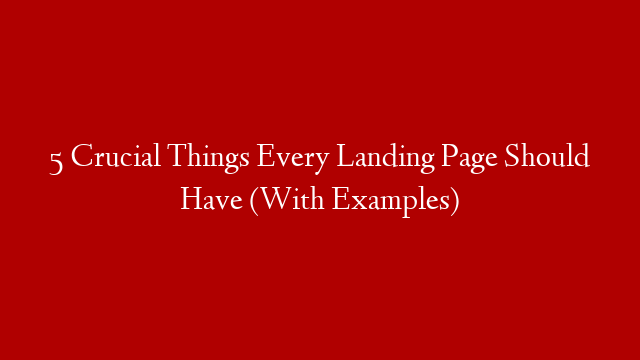When it comes to online marketing, landing pages are essential. They are the pages that web users see after clicking on a link in a search engine or on social media. A well-designed landing page can encourage web users to take the desired action, whether that’s signing up for a newsletter, making a purchase, or downloading a white paper.
There are a few key things that every landing page should have in order to be effective. Here are five of them:
1. A Clear and Concise Message
Your landing page should have a clear and concise message that tells web users what you want them to do. This could be as simple as telling them to sign up for your newsletter or download your white paper.
2. A Strong Call to Action
Your landing page should also have a strong call to action. This is the button or link that web users click on in order to take the desired action. Make sure it’s easy to see and easy to click on.
3. A Relevant Image
An image is a great way to capture the attention of web users and to help them understand what your landing page is about. Make sure the image is relevant to your message and to the call to action.
4. A Short and Concise Form
If you’re asking web users to fill out a form, make sure it’s short and concise. Ask for the information you need and nothing more.
5. A Well-Designed Layout
Your landing page should be well-designed and easy to navigate. Make sure the text is easy to read and the buttons and links are easy to click on.
Here are a few examples of landing pages that have all of these elements:
1. The landing page for the book “How to Win Friends and Influence People” has a clear and concise message telling web users what the book is about and what they need to do in order to download it.
2. The landing page for the website “The Huffington Post” has a strong call to action telling web users to sign up for the newsletter.
3. The landing page for the website “Apple” has a relevant image of an iPhone and a strong call to action telling web users to buy the phone.
4. The landing page for the website “Facebook” has a



